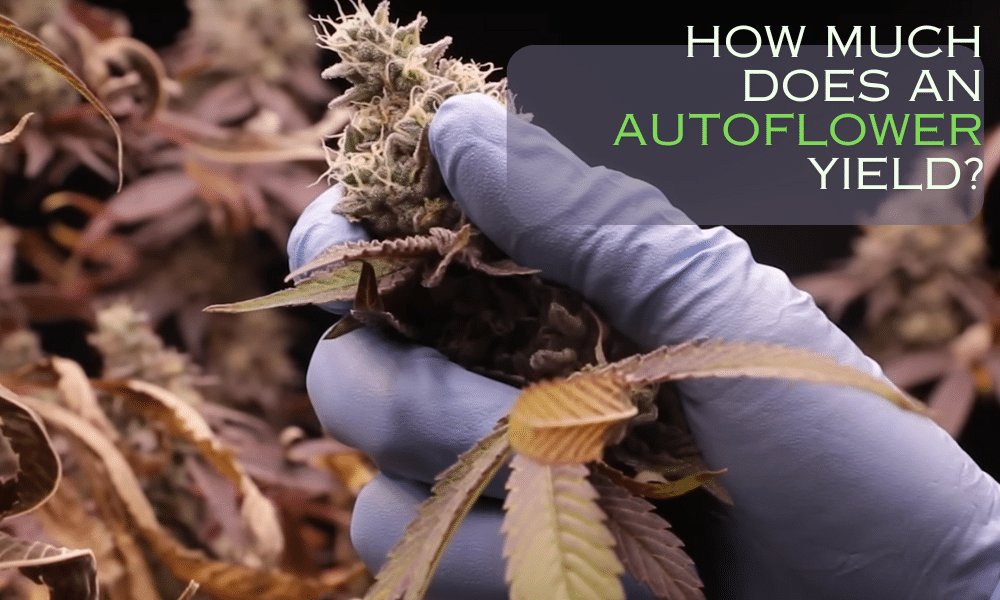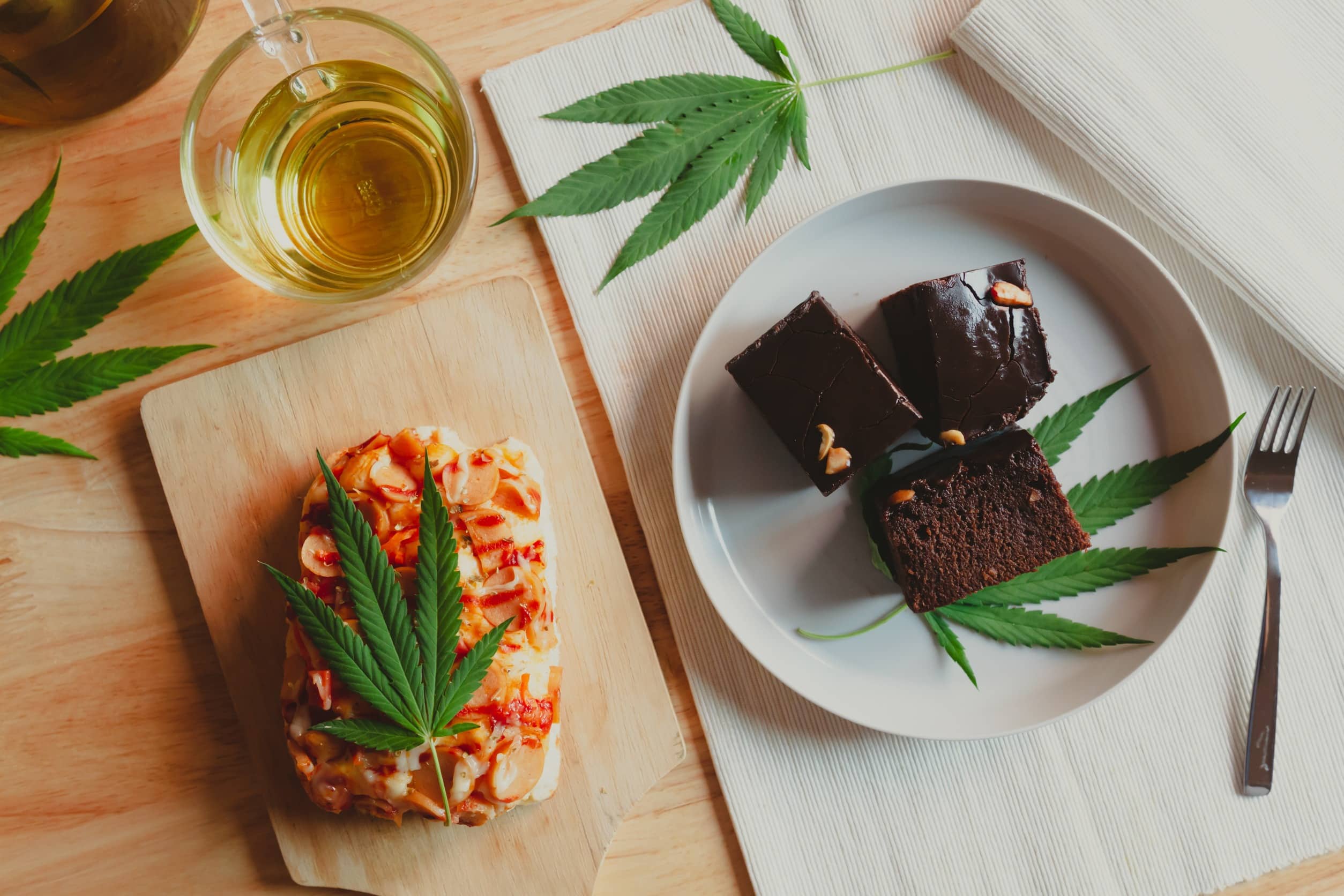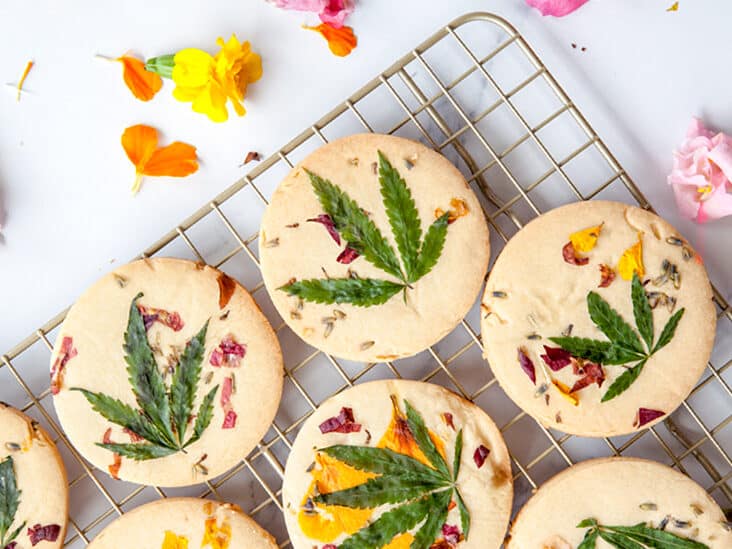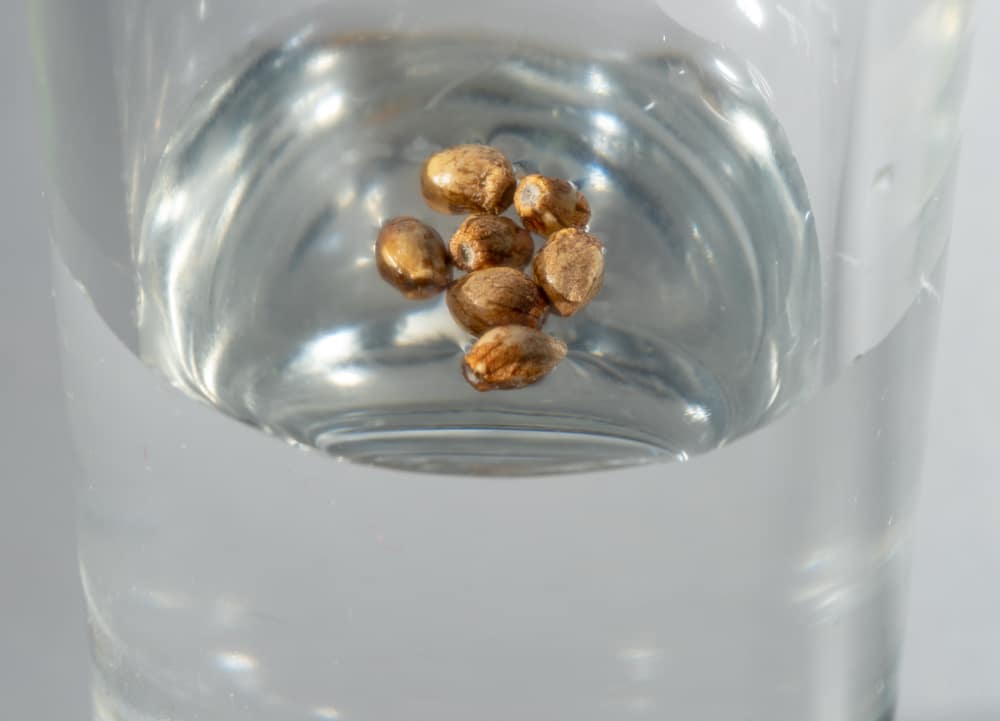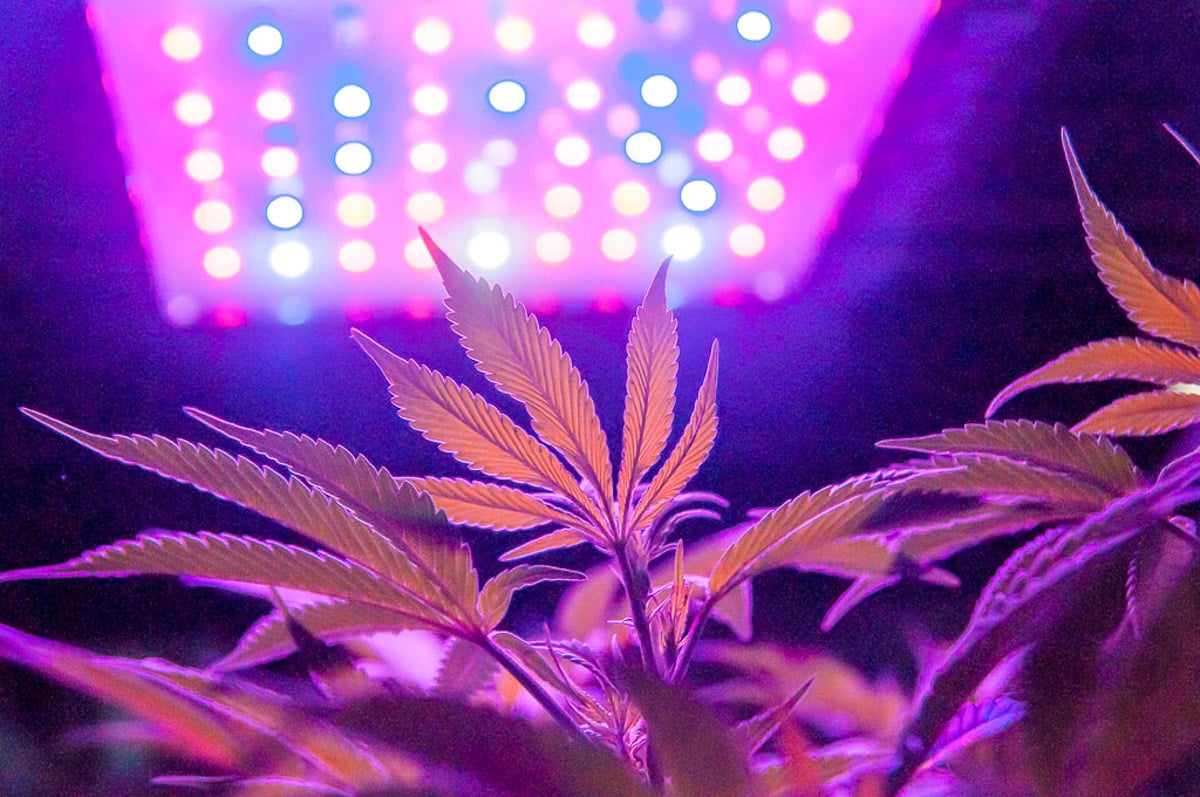No products in the cart.
Marijuana Education
How Much Yield Does an Autoflower Produce?
Some autoflowers can produce yields some photoperiod cannabis can only dream of achieving.
“How much does an autoflower yield?” is a question that comes up literally almost every season. Autoflowers are really popular for their typically small yields. But, sometimes, we see outliers; those autoflowers that produce yields even some photoperiod cultivars can only dream to achieve.
While it is unlikely for an autoflower strain to grow 10 pound plants, autoflowers can be profitable too.
So, exactly how much yield does an autoflower produce? And what determines the amount of yield an autoflower produces?
WHAT ARE THE AVERAGE AND MAXIMUM AUTOFLOWER YIELDS?
The average and maximum autoflower yields vary with strain genetics, environment, grow technique, etc. However , most autoflowers can produce average yields of between 60 and 100 grams per square meter when grown indoors and one cannabis plant can produce an average autoflower yield of up to 200 grams outdoors.
With maximum autoflower yields, an autoflower can produce over 220 grams of fresh buds per plant. Other times, this maximum autoflower yield amount can reach over 550 grams. The amount of autoflower yield you get, average or maximum, depends on many factors.
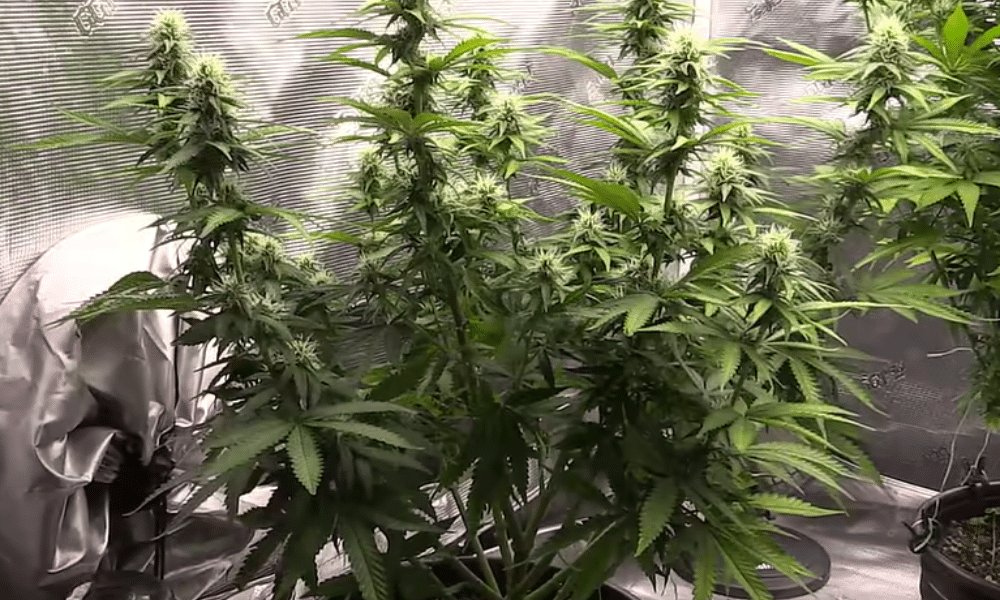
CONVERTING WET BUDS TO DRY YIELDS
To accurately compare the autoflower yields, you must know how to convert wet bud weight to dry yield weight.
The wet bud weight is the weight of the fresh flower, moisture content and all, and is the weight most seed banks and cultivar reviews report when estimating autoflower yields. However, the dry yield weight is the actual weight of your autoflower; after processing is complete.
The wet bud to dry yield weight (conversion rate) may vary per various factors, especially whether your autoflower is indica or sativa. However, one study recommends using a conversion rate of 14.37%.
Using this rate, to convert wet bud weight to dry yield weight, the formula is:
Conversion Rate (14.37%) x Wet Weight
Applying this formula, the dry yield of a Bruce Banner autoflower, which has a wet bud of 700 grams per plant, will be:
14.37% x 700 grams = 100.59 grams per dried plant
WHAT AFFECTS AUTOFLOWER YIELDS?
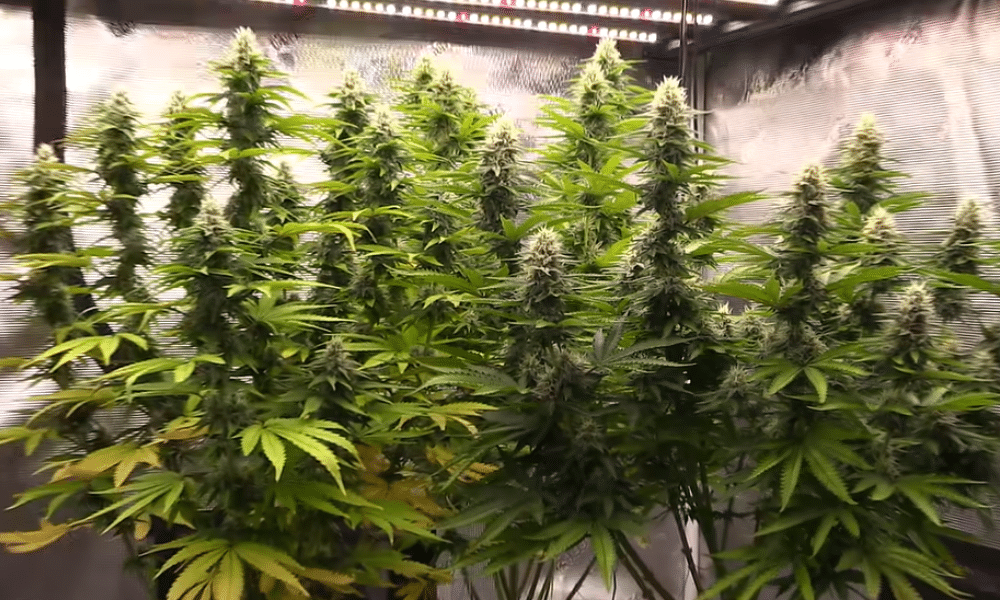
Several factors determine how much autoflower yields you’d get at harvest, and these factors are not just about how many autoflowers you planted that season. The following are a few factors that affect autoflower yields;
Outdoor vs. Indoor Growing
Autoflowers are stress-sensitive cultivars so most cannabis growers prefer to grow their autoflowers indoors to nurture them towards the best yields. However, outdoor growing also has its perks; especially the ample space it provides.
Light
Autoflowers may not grow according to light schedules or patterns. But, they do enjoy a good light intensity and schedule when developing their yields.
Pot
Choosing the right pot size and pot material determines how well your autoflower will grow and its yields. The right pot size will keep your plant from becoming rootbound or wasting energy filling the pot, and the right pot material will help maintain the right substrate conditions.
Nutrients Usage
Autoflowers need the right nutrients for each of their autoflower grow stages. Providing all but enough of the right nutrients for autoflowers will limit the resources it needs to increase its yields. Also, overfeeding your autoflowers is just as bad. You risk a nutrient burn and even nutrient lockout when you overfeed your autoflowers.
The Number of Plants
Of course, how many autoflowering seeds you plant or germinate determines your final autoflower yields. When starting your autoflower grow, maximize your grow space, but avoid overcrowding your pot or room. Multiple small-sized autoflowers (3 to 5), like Lowryder, can fit into large sized pots.
Training
You can train your autoflowers to increase autoflower yields. But, you must know what plant training techniques can help increase yield production for autos. Aggressive training techniques, like topping, will only risk your autoflower yields. So will training autos during the flowering stage.
Genetics
Some autoflowers are genetically small-yielders. Try as you may, you can’t get these seeds to grow past their small averages. If you want to get bigger autoflower yields, choose the big yielders, like Sour Diesel.
Temperature
Temperature affects your autoflower’s physiology. High temperatures lowers humidity levels to a point of heat stress, which may cause wilting. While very low temperatures freezes your plant and stops it from developing well or even at all.
Harvest Timing
You need to know when to harvest autoflowers so you do not harvest too early or too late. Harvest autoflowers too early and you’d leave a ton of yields unrealized. Harvest autoflowers too late and your yield quality will decline. There is a best time to harvest autoflowers.
Some other factors that affect autoflower yields include:
- Watering quantity, frequency, and the type of water used
- How much care you offer your autoflowers during the vegetative stage
- Pests and disease infestations
- The level of growth monitoring and customized care
9 REASONS WHY YOUR AUTOFLOWER YIELDS ARE SO SMALL
Your autoflower yields may be that small for many reasons. Sometimes, it is a combination of reasons your autoflower yields are so small.
Since the denser the buds, the heavier the harvests, the Seed Fair team ran a survey to find out what tricks cannabis growers use to get bigger yields. Here’s what we found:
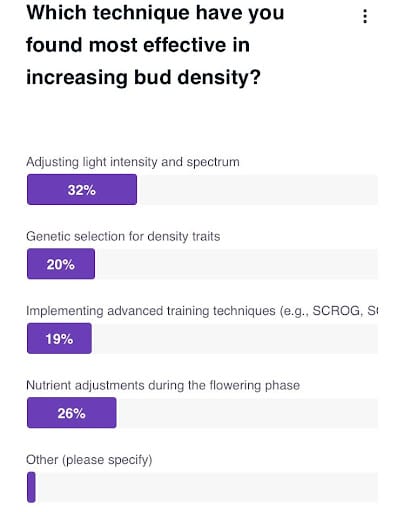
32% of cannabis growers adjust their light intensity and spectrum to increase their yields. 26% adjust nutrient levels to get bigger cannabis yields. 20% selected choosing genetics with really dense buds and 19% said they use plant training techniques to increase bud density.
From these results, we selected top 9 reasons your autoflower yields are so small:
Insufficient Light
Autoflowers are green plants; they need light to produce bountiful yields. Not providing the best light for autos, schedule and intensity, is a possible reason your autoflower yields are so small.
The Pot is Too Small
Autoflowers need a large enough pot to properly sustain their root system if you want to get big autoflower yields: without the right pot size, your autoflower will become rootbound and suffocate.
Stress Due to Aggressive Training
You can plant-train your autos but do not apply aggressive training techniques. High-stress training techniques will cause your autoflower to spend more time recovering instead of increasing their bud yields, a luxury they cannot afford.
Poor Genetics
No matter how hard you try, if your autoflower plants produce seeds with poor genetics, you will have relatively small yields. Autoflowering seeds with poor genetics will struggle to germinate (if they germinate at all), bloom properly, and survive stress and other threats to yield. High-quality genetics are crucial for robust growth, successful flowering, and optimal yield, ensuring that your plants produce seeds that can thrive in various conditions.
Humidity is Too Low
Extremely low humidity levels at any of the autoflower growth phases will limit water activity and in turn every process that requires moisture, which is practically every development process. Your autoflower may even go into shock and stop developing when humidity levels are too low.
You are Growing a Low-Yielding Strain
Some autoflower seeds are genetically low-yielders. Despite your best efforts, these Autoflowering seeds will produce mere meager yields.
Pests and Diseases
When your autoflower experiences a pest or disease infestation, it stops developing and tries to recover. This pause is a possible reason why your autoflower yields are so small.
Overwatering
Overwatering your autoflowers could drown their roots and cause your plant to suffocate and die. Otherwise, watering your plants too frequently or more than you should depletes available nutrients and could lead to a nutrient deficiency which would reflect on your yields.
Too Little Nutrients
Underfeeding your autoflowers limits the amount of resources it has to develop bigger yields. Underfeeding your autoflowers goes two ways: providing too little of the essential nutrients or ignoring the best nutrients for your autoflower’s growth stage.
AUTOFLOWERING STRAINS PRODUCING SUPER YIELDS
We’ve selected the following autoflower strains as some of the best autoflowering strains for super yields based on their yield quantity, bud quality and density, and general resilience:
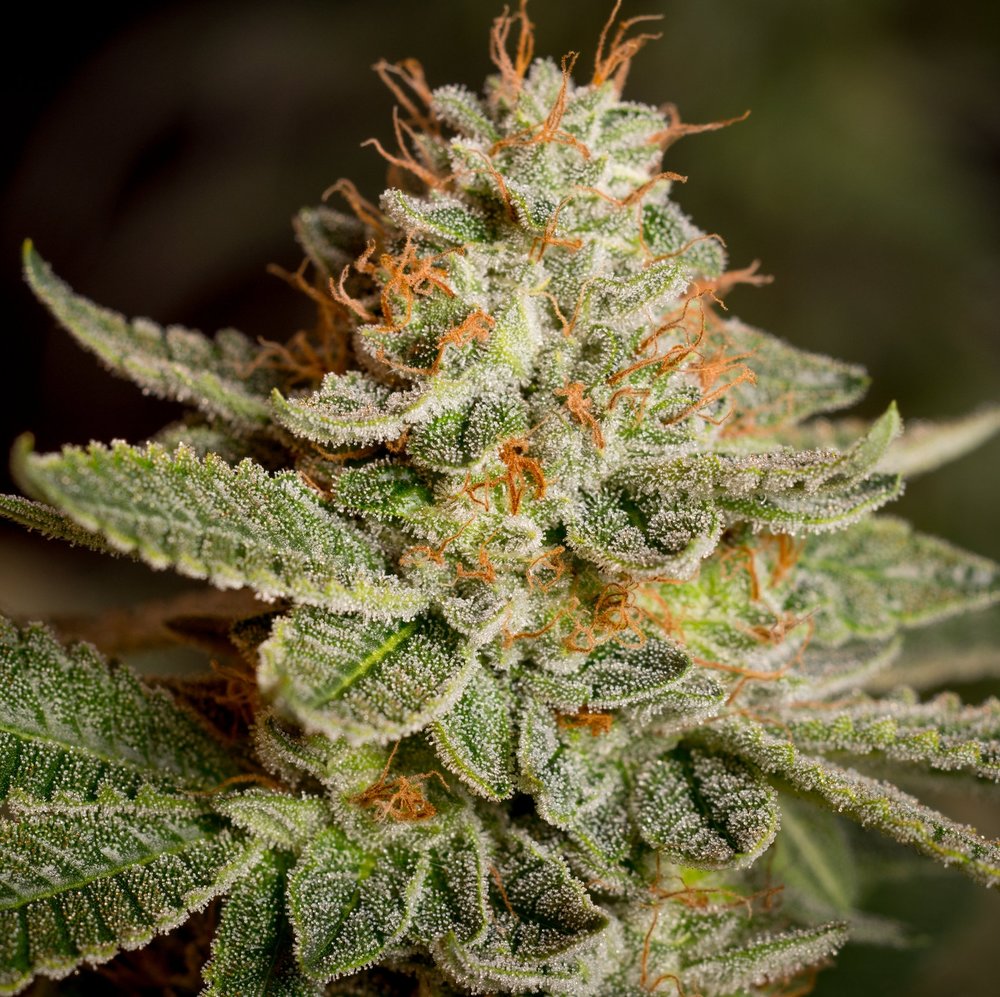
Diesel Autoflower
THC: 15%
Yield Indoors: 800 grams per plant
Yield Outdoors: 800 gr/m²
- EXPRESS SHIPPING 1-5 DAY*
- GERMINATION GUARANTEED*
- FREE SEEDS WITH EVERY ORDER
1 Reviews
The Diesel Autoflower is one of our best autoflowering strains for getting super yields because it has an indoor autoflower yield of over 13 ounces (368 grams) per square meter and an outdoor autoflower yield of about 18 ounces (510 grams) per plant. This autoflowering strain is a Sativa-dominant hybrid with a strong odor and a quick seed-to-harvest growth cycle of 8 to 10 weeks. The Diesel Autoflowering strain grows up to 0.5 meters indoors and can reach a height of over 1 meter outdoors.
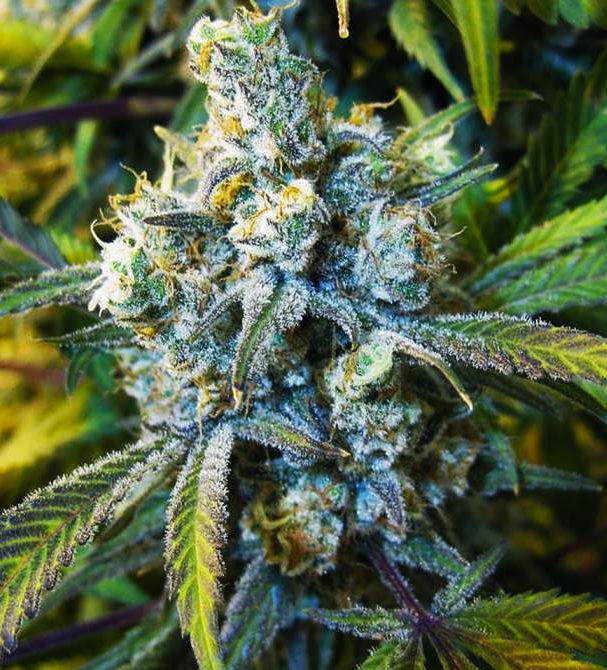
Super Silver Haze Autoflower
THC: 15%
Yield Indoors: 800 grams per plant
Yield Outdoors: 800 gr/m²
- EXPRESS SHIPPING 1-5 DAY*
- GERMINATION GUARANTEED*
- FREE SEEDS WITH EVERY ORDER
1 Reviews
The Super Silver Haze Autoflower is another Sativa-dominant hybrid on our list of the best autoflowering strains for super yields. This hybrid autoflower produces about 4 ounces (113 grams) per square meter indoors and about 7 ounces (198 grams) per plant outdoors. It reaches full harvest in about 10 to 12 weeks and can grow up to 1.5 meters when cultivated outdoors.
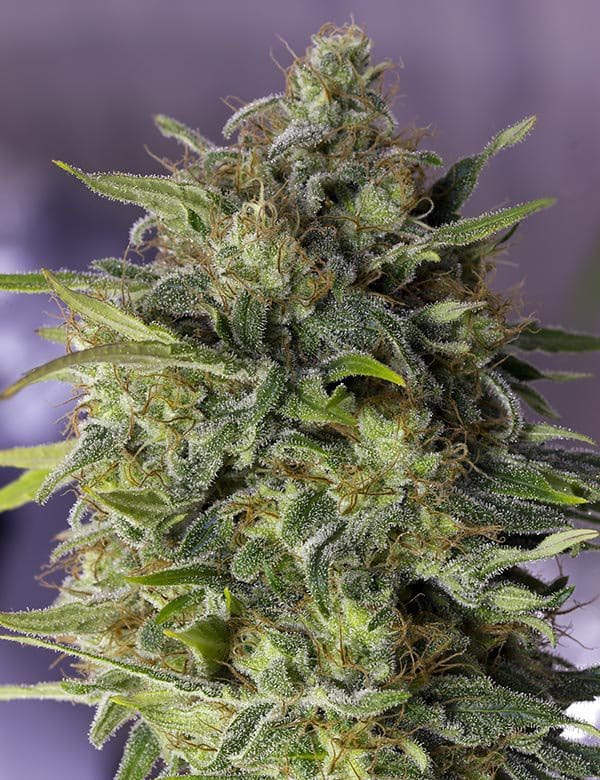
Damnesia Autoflower
THC: 16%
Yield Indoors: 595 grams grams per plant
Yield Outdoors: 793 gr/m²
- EXPRESS SHIPPING 1-5 DAY*
- GERMINATION GUARANTEED*
- FREE SEEDS WITH EVERY ORDER
1 Reviews
The Damnesia Autoflower is considered one of our best autoflowering strains for super yields because it is popular for its moderate to high yield potential. The Damnesia autoflowering strain is an indica-dominant autoflowering hybrid that produces about 21 ounces (595 grams) per plant indoors and 28 ounces (793 grams) per square meter outdoors. This autoflowering strain can grow to a height of 1.2 meters and complete its growth cycle in 8 to 10 weeks.
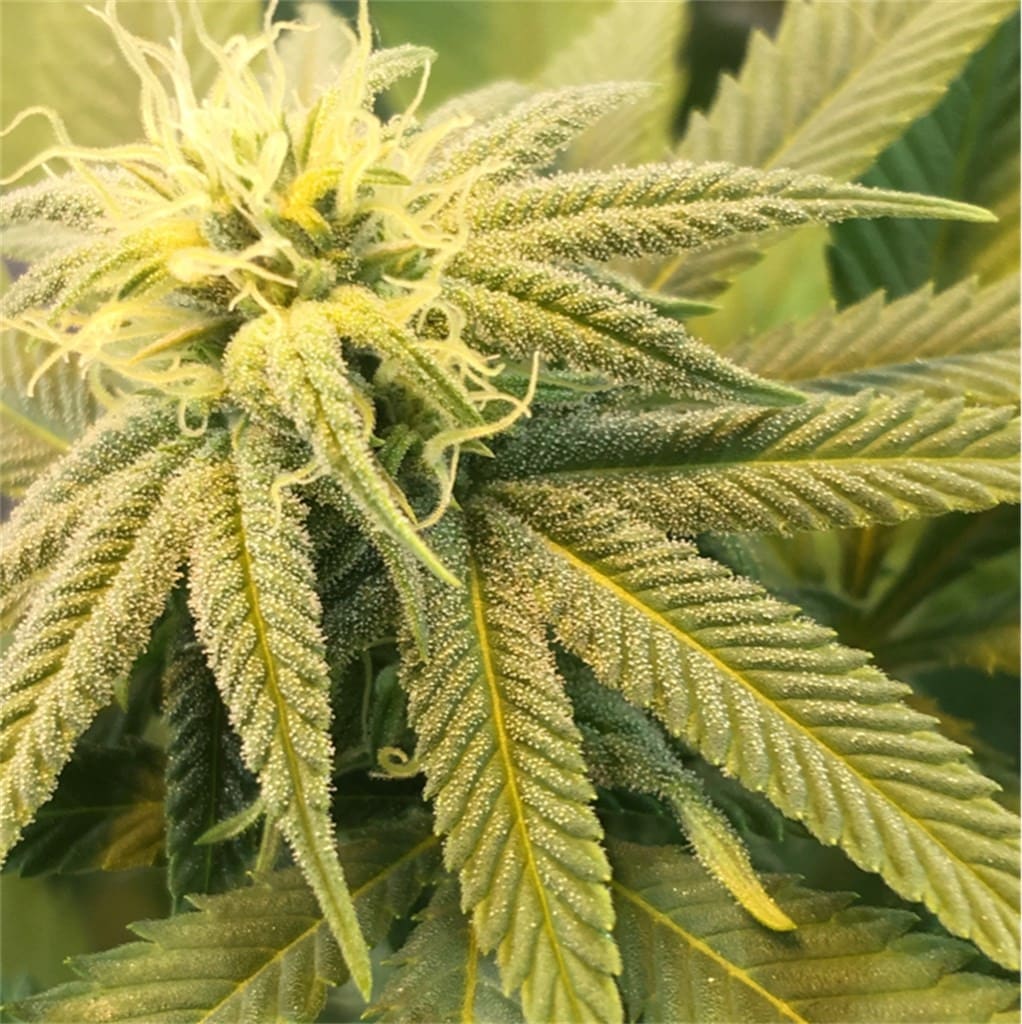
Afgooey Autoflower
THC: 23%
Yield Indoors: 1000 grams grams per plant
Yield Outdoors: 900 gr/m²
- EXPRESS SHIPPING 1-5 DAY*
- GERMINATION GUARANTEED*
- FREE SEEDS WITH EVERY ORDER
1 Reviews
The Afgooey Autoflower is another indica-dominant autoflowering strain known for its moderate to high yields. This autoflowering strain produces about 31 (900 grams) ounces per plant indoors and a super autoflower yield of about 33 ounces (1000 grams) or more outdoors. The Afgooey autoflowering strain has a full growth cycle of about 8 to 10 weeks.
Conclusion
“How much do autoflowers yield?” is a question you’d have to compare against what other factors affect your autoflower. Your autoflower can produce yields that rival what you’d find with a photoperiod cultivar, or fail to produce yields that reflect you put in so much work.
So you don’t end up disappointed with your autoflower yields, make sure to note and understand what factors affect your autoflower yields before exploring the thrills of this cultivar.
FAQ
What is the average yield of an indoor autoflower with LED?
The average yield of an indoor autoflower LED can extend even beyond 150 grams per plant with the right cultivar and environment.
Are average autoflower yields bigger than yields from photoperiod strains?
Autoflower yields can be bigger than yields from some photoperiod strains. However, the average autoflower yield is typically smaller than yields from photoperiod strains.
How much does a 600W autoflower yield?
A 600-watt autoflower yield can range from 50 to 250 grams per plant and even more. The amount of autoflower yields you’d get with a 600W light depends on the factors that affect autoflower yields.
Do autoflowers produce more than once?
Autoflowers are regarded as once-and-done plants. There are no proven ways to take them back to their vegetative stage once they begin flowering. But you can harvest autoflowers more than once with progressive harvesting.


